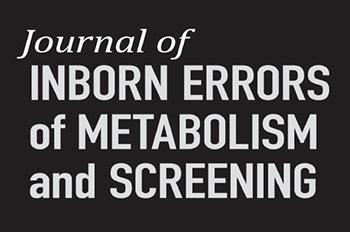Homocysteine (Hcy) is a nonprotein amino acid, intermediate of the metabolism of methionine (Met) and cysteine (Cys). Homocysteine is formed from Met and is converted to Cys, being also able to resynthesize Met, through different enzymatic steps involving methylation, remethylation, and transsulfuration, and with participation of vitamin B12 (cyanocobalamin), vitamin B6 (pyridoxal phosphate), and folate as cofactors of the involved chemical reactions.
Nutritional deficiencies of these vitamins and genetic defects of Hcy metabolism are mainly responsible for the elevation of cellular and plasma concentrations of Hcy (hyperhomocysteinemia [HHcy]), as well as for the high excretion of homocystine (oxidized Hcy) in urine (homocystinuria). The inherited disorders of Hcy metabolism lead to severe increases in plasma Hcy levels, whereas mild to moderate HHcys are caused by vitamin deficiencies.
Inherited enzymatic defects involved in Hcy metabolism include remethylation defects due to deficiencies of the methylenetetrahydrofolate reductase and Met synthase enzymes, as well as defects of the intracellular metabolism of cobalamin. The main biochemical findings of remethylation defects are homocystinuria and HHcy with low or relatively normal levels of plasma Met, which differentiates these diseases from the classical homocystinuria caused by cystathione β-synthase (CBS) deficiency, in which plasma Met levels are also high. Patients affected by classical homocystinuria present thromboembolic events, as well as ectopia lentis, skeletal abnormalities, and mental retardation, raising the possibility that disturbance of the involved tissues/organs may be caused by HHcy.
Hyperhomocysteinemia can be also caused by medications that interfere with Met metabolism, such as methotrexate and the anesthetic nitrous oxide, or by excessive Met intake. In addition, a large and heterogenous spectrum of pathological states, including cardiovascular diseases (CVDs), neurological disorders with cognitive impairment like Alzheimer disease, psychiatric disorders, renal failure, tumors, and others, were shown to be positively associated with HHcy. These associations raised the presumption that Hcy accumulation may be a reason or an aggravating factor in these diseases, although causal links are still lacking or not fully proven for most pathologies. Possible exceptions for this presumption is the great deal of data indicating that HHcy is a risk factor for atherosclerosis and CVD, as well as for Alzheimer and possibly Parkinson diseases, and that CBS treatment-lowering HHcy markedly decreased the thromboembolic episodes of the affected patients.
Thus, although much has been published on the association of HHcy with these heterogeneous pathological states, very little is known about the underlying mechanisms of Hcy tissue injury or whether high plasma levels of Hcy are a cause or a biomarker for many of these disorders. Clarifying the impact of altered Hcy homeostasis continues to be a matter of active research worldwide. Indeed, the questions what is the meaning of elevated plasma Hcy and how does Hcy elicit pathology remain to be unanswered. Further research is needed to address these fundamental questions and pave ways to assist clinicians and scientists in the potential design of better therapies in HHcys.
In this context, treatment with vitamin B6 supplementation is essential in responsive CBS-deficient patients, whereas folic acid and vitamin B12 addition was shown to lower Hcy levels improving endothelium-dependent vasodilation and reducing exercise-induced myocardial ischemia in coronary heart disease, although others works showed neutral effects. Administration of vitamin supplements with B12 and folate was also shown to improve cognition in diseases with cognitive impairment including Alzheimer disease, but other studies showed no benefit of these vitamin supplements in individuals with cognitive impairment, signaling that multicentric clinical and basic studies are needed to clarify the beneficial effects of these cofactor vitamins and establish the mechanisms of neurodegeneration.
Summarizing, elucidation of the exact role of Hcy in the pathogenesis of pathological states associated with HHcy is of utmost importance to improve the assessment and potential therapy of HHcy. In this scenario, this supplement edition of JIEMS aims to update in a few papers interesting data on the relationship between HHcy and vitamin B12 deficiency, in some neurological, psychiatric, genetic disorders of methylation, and also in Gaucher disease that are also characterized by increased levels of Hcy, in an attempt to bring new data improving our knowledge on the role of HHcy in these diseases.
Publication Dates
-
Publication in this collection
2018
History
-
Received
15 July 2018 -
Accepted
26 July 2018

 The Role of Hyperhomocysteinemia in Disease
The Role of Hyperhomocysteinemia in Disease